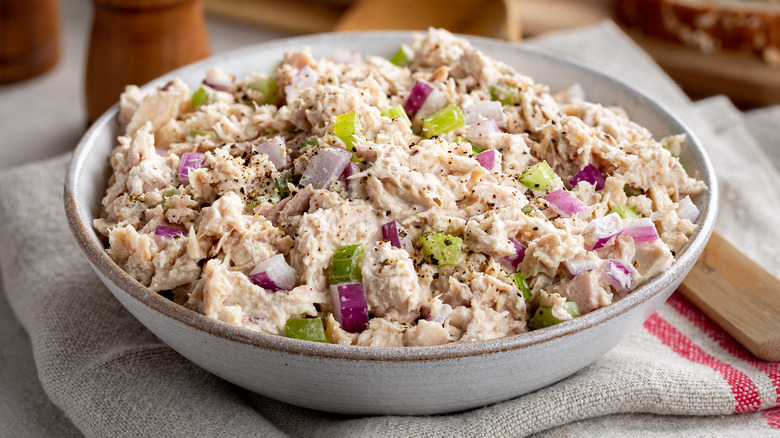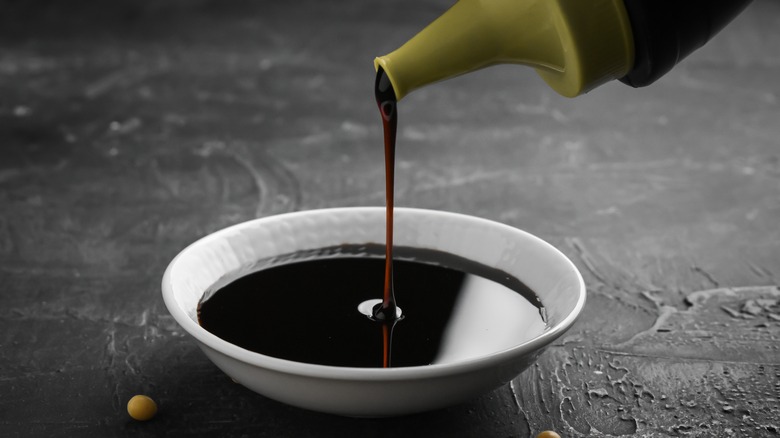The Umami-Rich Ingredient Your Tuna Salad Has Been Missing
The popularity and versatility of tuna salad cannot be overstated, especially when it's consumed inside a hearty sandwich — though certain types of tuna make for a better version. But have you ever wondered where the dish came from?
Salads made from fish and shellfish were the norm at lunch spots during the late 19th century (via Smithsonian Magazine). Once canned tuna was introduced at the beginning of the 20th century, people began using it for their beloved fish salads since doing so was more convenient than prepping and cooking a whole fish. The term "tuna salad" dates back to 1907, but it didn't grow in popularity until the 1930s when canned tuna was all the rage, per Gotham Bagels. A salad itself had a bit of a high-class reputation then, so naturally, one made out of tuna was a trendy thing to make.
A tuna salad nowadays more or less sticks to most of the ingredients found in popular recipes from the past, though variations have certainly blossomed over the years — including those with a umami-forward approach. To that, we've got a familiar ingredient that will add a savory boost to your tuna salad.
A salty condiment
Soy sauce is salty and rich in umami, making it the perfect addition to tuna salad. In fact, you'll find all five basic tastes in the condiment, which contribute to enhancing the flavors in food, per the Umami Information Center. But when using soy sauce and tuna together, it's important to choose a type that will be suitable for the mixture as well as your palate. There are different kinds of soy sauce, including light and dark. Lighter soy sauces keep the focus on the dish in question — in this case, the tuna salad. In other words, this type of soy sauce shouldn't be too overpowering. Darker varieties, on the other hand, are known for heightened umami and rich flavors, which may be a good choice if you want to really taste the soy sauce.
If you need more of a reason to use the condiment, Salted Spoonful claims that it's the secret ingredient in the tuna salad at Jimmy John's. The food blog's recipe calls for 1½ tablespoons of low-sodium soy sauce, 14 or 15 ounces of canned tuna, and a few other ingredients. These are all mixed together and then left to marinate for three hours (though overnight is ideal), which apparently makes the overall flavors that much better.
So next time you're making some tuna salad, bring out those savory flavors with the salty and umami profile of soy sauce.

